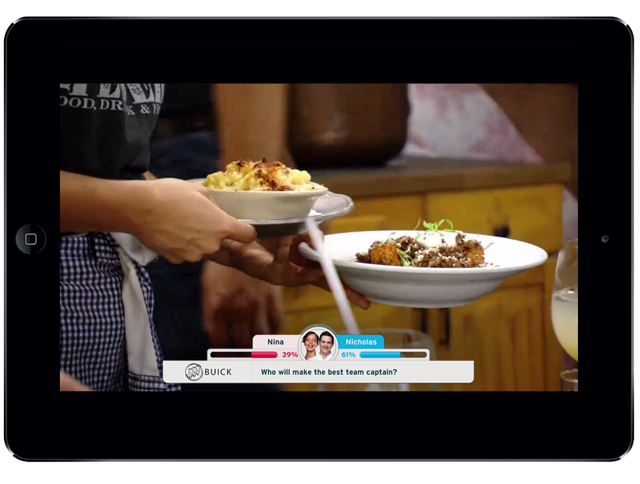 TV networks don’t lack for premium video content. But monetizing that content without pre-roll, mid-roll and interstitials? That’s another story.
TV networks don’t lack for premium video content. But monetizing that content without pre-roll, mid-roll and interstitials? That’s another story.
“For the most part, TV networks are taking the linear television model and trying to directly translate it to digital,” said Zane Vella, CEO of Watchwith, a company that taps into episode-level metadata to place contextual interactive placements within videos across a network’s owned and operated properties, including apps, websites and connected TV.
Watchwith’s client list includes Fox, NBCU, CBSi, Viacom, Syfy and Bravo.
To break it down, Watchwith analyzes every frame of a video to determine what’s happening moment by moment. From there, it generates avails at specific moments within a show. These in-program slots can be filled with anything from polls, trivia or song downloads to ecommerce events, branded bonus content or quizzes.
Watchwith announced Wednesday that its inventory will be available programmatically through exchanges, including Google’s DoubleClick. Through the DFA integration, networks and their advertiser clients can also leverage their own first-party data to target in-program placements to different segments.
“This is about creating scale for this advertising opportunity,” Zella said. “It doesn’t have to be a one-off thing.”
Bravo, for example, is leveraging in-program avails to monetize its “Best New Restaurant” show by embedding natively placed contextual polls sponsored by Buick.
Fox Networks Group is also experimenting with the technology, said Joe Marchese, president of advanced advertising at the network, a post he snagged in February, several months after 21st Century Fox shelled out $200 million to acquire True[X], the video ad platform where Marchese previously served as CEO.
“Nonlinear or on-demand viewing requires us to rethink current ad formats,” Marchese said. “Consumers would obviously prefer to limit the length and number of interruptions when watching our programming, and we would obviously still like to make money from advertising – so, any product that can achieve both we’re eager to test with.”
The goal is to be as additive without being interruptive, said Zella, noting the “obscene amount of ads” that have become the unfortunate bedfellow of online video content.
“If the future of TV is apps, as Apple says, then the reality is a bummer,” said Zella. “You can’t just assume that replicating the linear ad load is going to work.”
It’s an ambition that also dovetails with the debate swirling around ad blocking, he said.
“There’s a need to redefine the video experience for both the viewers and the content owners,” said Zella. “ We’re trying to push for something other than just a brand impression.”















